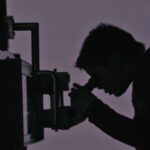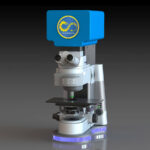The natural world is filled with colors and visual cues beyond the reach of human perception. Among these is ultraviolet (UV) light—a spectral region invisible to us but critical to how many animals interpret their surroundings. From birds to bees and spiders, UV sensitivity plays a pivotal role in behaviors like mate selection, foraging, and predator avoidance. To study this hidden visual dimension, researchers turn to a powerful tool: microspectrophotometry.
This technique has shed light—literally—on how UV wavelengths are transmitted through ocular structures and absorbed by specialized photoreceptors. In this article, we explore how microspectrophotometry has deepened our understanding of animal vision, using recent research on jumping spiders as a case study.
Why Ultraviolet Vision Matters
Many animals can detect UV light, which has wavelengths below 400 nanometers. This ability enhances survival and reproductive success in numerous ways:
- Mate attraction: UV-reflective markings often serve as visual signals during courtship.
- Foraging: UV cues on petals and leaves guide pollinators to nectar sources.
- Predator detection: Some species use UV cues to detect camouflaged predators that remain hidden in visible light.
Understanding these capabilities requires exploring how UV light is processed by the eye—something microspectrophotometry is uniquely suited to do.
What Is Microspectrophotometry?
Microspectrophotometry measures how microscopic samples absorb, transmit, or reflect light across a range of wavelengths. When applied to biological systems, it allows scientists to analyze how light interacts with tissues and cells involved in vision, down to the subcellular level.
In UV vision studies, microspectrophotometry is commonly used to examine:
- Lens and vitreous transmission: These components filter incoming light and shape the spectral profile that reaches the retina.
- Photoreceptor absorbance: Different photoreceptors are sensitive to specific wavelengths, including UV, influencing how animals perceive color and contrast.
Case Study: Jumping Spiders and UV Perception
A 2015 study by Zurek and Morehouse used microspectrophotometry to investigate the visual system of Habronattus pyrrithrix, a species of jumping spider known for its complex courtship displays.
Lens and Vitreous Media Transmission
The researchers found that the spider’s corneal lens transmitted about 50% of UV light at 320 nm—a surprisingly high value. Even more striking, the vitreous medium (the gel-like substance inside the eye) was even more transparent to UV. These results suggest that the spider’s eye is evolutionarily tuned to allow efficient passage of UV light to the retina.
Photoreceptor UV Sensitivity
Microspectrophotometric measurements of the retina revealed multiple classes of photoreceptors, including those highly sensitive to UV wavelengths. This trichromatic vision (with UV, green, and red sensitivity) enables spiders to perceive subtle color differences that are invisible to the human eye—differences that are critical during mating rituals, where males display UV-reflective body markings to attract females.
Applications of Microspectrophotometry in UV Vision Studies
Microspectrophotometry is an indispensable technique for studying UV vision in a wide variety of species:
- Birds: Many species display UV-reflective plumage used in sexual selection. Microspectrophotometry helps researchers determine which UV wavelengths are detected by their specialized photoreceptors.
- Insects: Bees and butterflies rely on UV floral patterns for efficient pollination. The absorbance spectra of their photoreceptors, mapped through microspectrophotometry, reveal how these insects distinguish between flowers.
- Fish: In underwater environments, UV light can penetrate where visible light cannot. Microspectrophotometry is used to study how fish eyes adapt to these spectral conditions.
Looking Ahead: The Future of UV Vision Research
As research continues to uncover the intricacies of visual ecology, microspectrophotometry remains a cornerstone technology. It allows for precise measurement of optical properties at cellular and tissue levels, making it ideal for exploring:
- The evolution of UV-sensitive vision in low-light or aquatic environments
- The adaptive significance of UV perception across taxa
- The genetic and developmental mechanisms behind UV photoreceptor formation
With advancements in instrumentation and data analysis, microspectrophotometry will play an increasingly critical role in mapping the evolutionary landscape of animal vision.
Conclusion
Microspectrophotometry provides a powerful lens through which to examine the ultraviolet world as seen by animals. By measuring the transmission properties of ocular media and the absorbance profiles of UV-sensitive photoreceptors, this technology has revolutionized our understanding of how species like jumping spiders perceive their environment.
As we continue to explore the hidden dimensions of light, microspectrophotometry will remain at the forefront—unlocking the secrets of visual systems that rely on wavelengths beyond the scope of human sight.
References & Further Reading
- Zurek, Daniel & Cronin, Thomas & Taylor, Lisa & Byrne, Kevin & Sullivan, Mara & Morehouse, Nathan. (2015). Zurek Morehouse 2015 Supplement.



